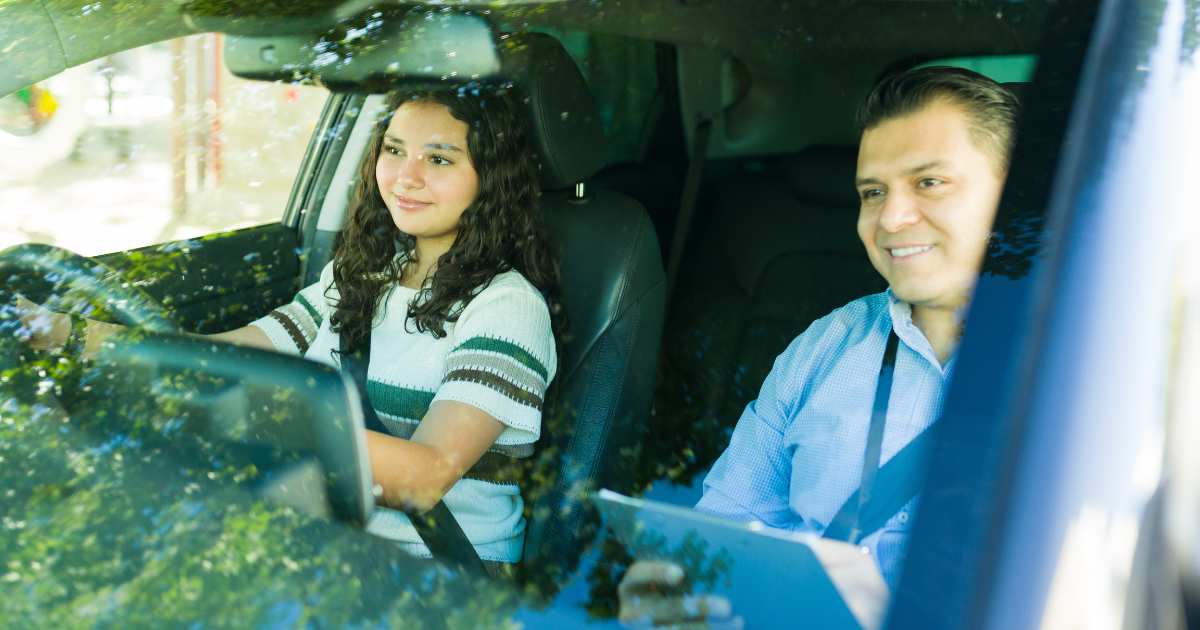
Driving Test Booking Changes For 2025 and 2026
Your guide to the latest driving test booking changes, new DVSA rules and measures aimed at cutting waiting times for learner drivers across the UK.
As the clocks go back and daylight fades earlier, many learner drivers will find themselves taking driving lessons in the dark for the first time. For those who are used to daytime driving, this change can feel daunting. Reduced visibility, glare from headlights, and unfamiliar night-time road conditions can potentially affect your confidence and ability to react quickly.
However, learning to drive in the dark is an essential part of becoming a competent and safer driver. Not only do night driving lessons prepare you for year-round driving, but they also help you build skills in observation, anticipation, and hazard perception. In this guide, we’ll explore why driving in the dark requires extra care, what you need to consider, and how to adapt so you can feel confident behind the wheel, whether you’re driving in the dark or in daylight.

Driving after dark presents unique challenges that even experienced drivers need to manage carefully. For learner drivers, these challenges can feel amplified, particularly when you’re still building confidence and learning the rules of the road.
Reduced visibility means hazards, pedestrians, and road signs can be harder to see. Judging distances, especially when approaching junctions or overtaking, can become more difficult. The glare from oncoming headlights can also temporarily limit your vision, affecting your ability to react. In addition, fatigue can be more common later in the day. Both learners and driving instructors should be mindful that concentration levels may dip during evening lessons, particularly after school/college or work.
Learning to drive at night, with a qualified driving instructor, can provide a controlled environment to experience these conditions safely. It’s also good preparation for future independence as real-world driving will inevitably include driving in the dark, especially during winter months.
Even for experienced motorists, driving in the dark can demand greater focus and awareness. For learner drivers, understanding these considerations is key to staying safe.
Make sure your headlights are clean and functioning correctly before setting off. You’ll rely heavily on them to see and be seen. It’s also important to learn when to use dipped and full beams correctly to avoid dazzling other drivers.
At night, it can be harder to spot road surface changes, such as potholes, puddles or debris. Drive at a slower speed to give yourself more time to react to unexpected road conditions.
Headlight glare from oncoming traffic can make it difficult to focus as your vision may be temporarily limited. If you can, avoid looking directly at bright lights and instead, use the left-hand kerb or road markings as a guide, so you’re not constantly staring ahead at bright lights.
They can be harder to see at night, especially if they’re wearing dark clothing or not using lights. Keep an eye out near crossings, bus stops, and residential areas where crossing pedestrians and cyclists may appear.
Darkness combined with rain or fog can severely limit visibility, which can be particularly dangerous for inexperienced drivers. Ensure your windscreen is clear, use the correct lights, and maintain a greater following distance as a precaution.

Taking driving lessons or private practice in the dark can feel different if you’re used to learning to drive in daylight. Here are some ways that you can adapt to driving lessons in the dark:
Try to arrange some of your lessons during sunset or early evening. This gradual transition can help you adjust to night-time conditions without feeling overwhelmed by driving in the dark from the start of the lesson.
Knowing your car’s light controls (headlights, fog lights, dashboard dimmers) can potentially make you more confident with adjusting your lights, which can also help to reduce distractions and improve visibility when learning to drive in the dark.
Look further ahead when you can and check mirrors more frequently. If visibility is reduced due to limited light, you need to focus more to spot hazards early, such as obstacles in the road, pedestrians, or unlit vehicles.
If you feel nervous, let your instructor know. A good driving instructor will adapt lesson plans and provide reassurance to build your confidence for driving in the dark.
Getting private practice outside of formal lessons can help to build confidence when learning to drive. Driving with a qualified supervising driver helps you experience real-world conditions, including driving in the dark, at your own pace. Just make sure you’re covered with the correct learner driver insurance before getting behind the wheel and your supervising driver meets the legal requirements.
Driving in the dark is an important part of becoming a safe and capable driver. Though reduced visibility and night-time conditions can make things more challenging, careful preparation and gradual exposure can help you build confidence and skill. Whether you’re learning with an approved instructor or practising privately with a supervising driver, adapting to driving in the dark is a vital part of learning to drive and prepare for you different driving conditions.
Learner driver insurance gives you the flexibility to practise safely outside of lessons with a supervising driver. With short-term or annual policies from Collingwood Insurance, you can build experience at your own pace, while staying fully covered and compliant with UK learner driving laws.
Commonly asked questions about driving in the dark
Yes, as long as your instructor or supervising driver meets legal requirements, it’s completely legal to take lessons after dark.
Driving tests can take place at any time during daylight hours, and in winter, that may include early evening conditions.
Confidence can come with preparation and practice. Familiarise yourself with the car’s lights, plan routes you know well, and communicate with your instructor if you feel unsure.
Not at all. Gaining experience while learning can help you to become a more confident, capable driver in all conditions.
Tell your instructor straight away. It’s better to pause or reschedule than to continue driving when you’re fatigued.
You will be logged out in seconds. Do you want to stay signed in?